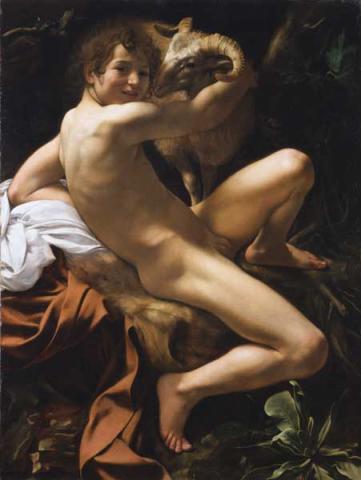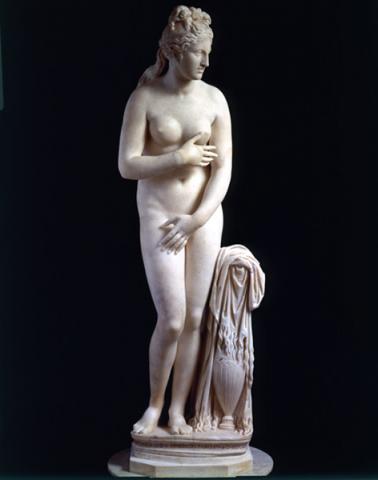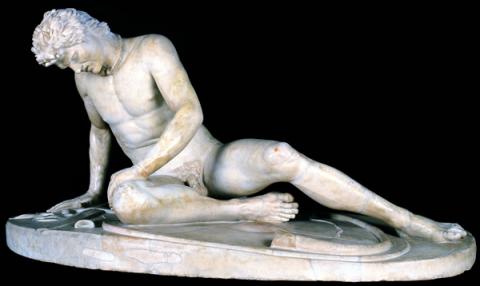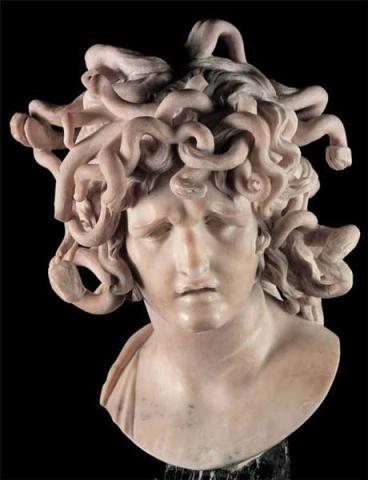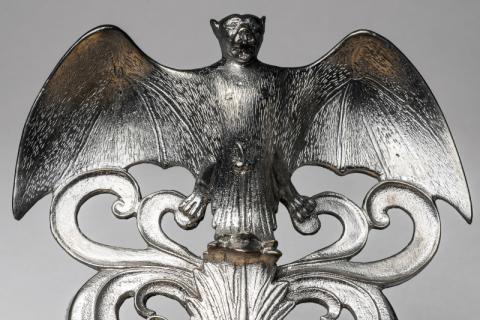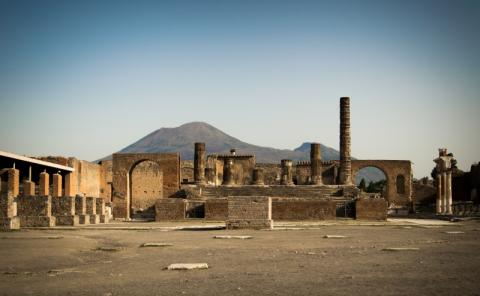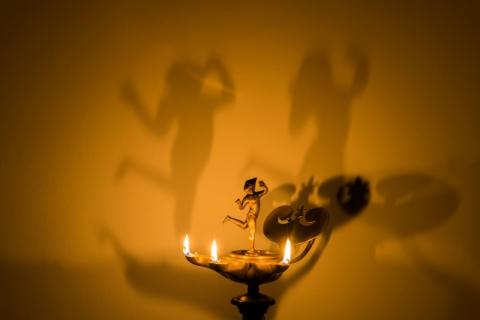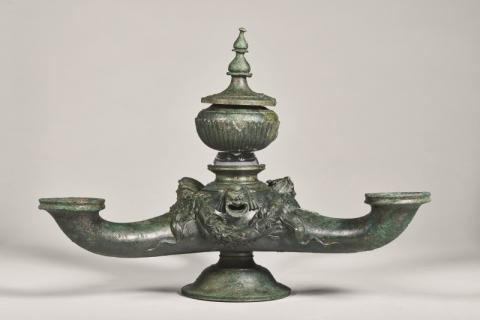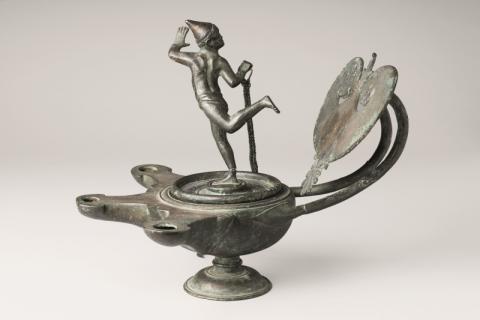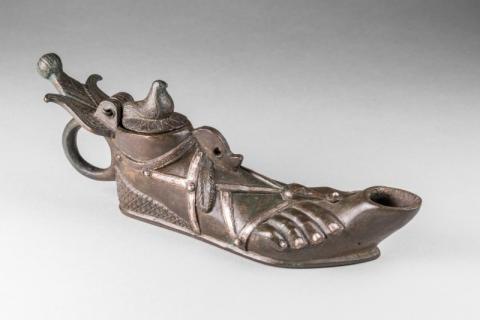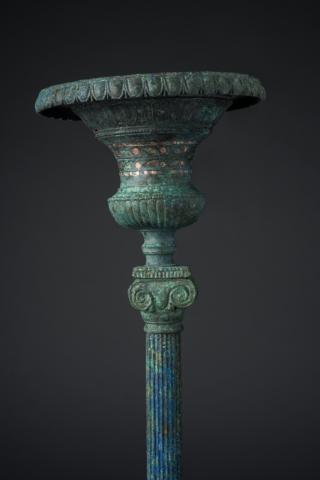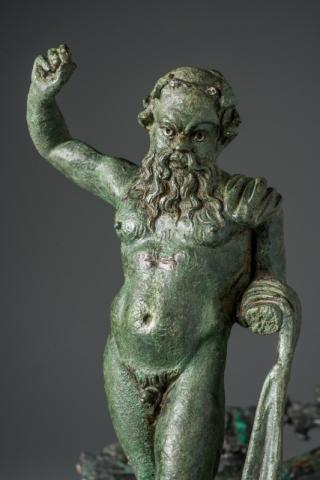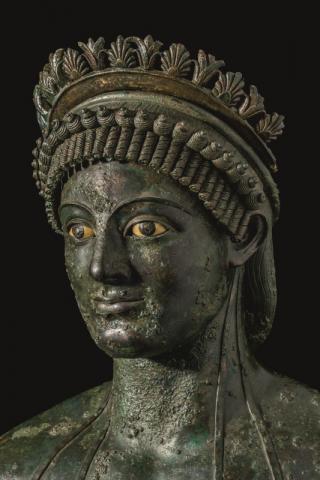Nuova Luce da Pompei a Roma

In the exhibition space at Villa Caffarelli, a virtual trip into the atmospheres and the lighting systems of the ancient world through more than 180 original bronze exhibits from the cities of Vesuvio and Roma.
A trip into the atmosphere and lighting conditions that enlightened the nights of the Romans: this is the evocative proposal of the exhibition "Nuova Luce da Pompei a Roma", at the Musei Capitolini - Villa Caffarelli, from 5 July to 8 October 2023. Promoted by Roma Capitale, Assessorato alla Cultura, Sovrintendenza Capitolina ai Beni Culturali in partnership with the Ludwig-Maximilian University of Munich, and curated by Ruth Bielfeldt and Johannes Eber, with the organisation of Zètema Progetto Cultura, the exhibition invites visitors to discover what is no longer visible: the light of the past.
For the first time, an exhibition takes a comprehensive approach to the technology, aesthetic aspect and atmospheres for artificial light in the Roman world. No other city in ancient times has provided so many lighting systems as Pompei. The exhibition brings to Rome 150 original bronze artefacts from the Vesuvio area: oil lamps, candle holders as well as figurative oil lamp holders and torches, works preserved at the Museo Archeologico Nazionale di Napoli (MANN) and the Parco Archeologico di Pompei (PAP). In addition to famous statues and sculptures of oil lamps, the exhibition also features exhibits belonging to the Museo Nazionale Archeologico di Napoli that are not displayed to the public, many of them specially restored especially for the event, and, in this Roman site, also some 30 works from the collections of the Musei Capitolini, Antiquarium.
The exhibition was designed by Prof. Ruth Bielfeldt, teacher in Classical Archaeology at the Ludwig-Maximilian University of Munich, as part of a research project that tackled these materials and themes in a systematic way, within an interdisciplinary scientific framework.
The Roman artificial light, that the exhibition invite us to rediscover, is the art of light. With their elaborate plastic forms and surfaces, bronze lanterns and illuminated lamps create a spectacular backdrop of light and shadow. The exhibition is accompanied by true-to-life reproductions produced in cooperation with the Fonderia d'Arte San Gallo AG, and by digital reproductions on three-dimensional models.
The subject of lighting offers a new perspective to understanding the different areas of the existence in ancient Rome: celebration and religion, magic and eros, dream and night. Lighting is a technical-cultural product that first of all allows the creation of a human space of sharing. This anthropological perspective on light, understood as a basic social medium, is used as a guideline for the storytelling process. In order to relate past and present, lamps by the light designer Ingo Maurer (1932-2019) have been included in the exhibition project. His poetic, playful, bizarre, subversive creations testify to the vitality of his creative relationship with light that has continued for two thousand years.
The exhibition itinerary, organised in 9 rooms, covers the importance of the role of light in everyday and social life, in a dialogue of the archaeological objects themselves with literary sources. Visitors are welcomed by an installation that contrasts the Silenus, an ancient oil lamp, with the modern work "Remember Yves" by Maurer, a blue sculpture with a strong aesthetic impact that recalls Yves Klein's leap into the void (1960) interpreted as an incarnation of light in motion. In the first room, an introductory educational video explains the scientific project 'New Light from Pompei' and follows the path of the sumptuous oil lamp with bat from the Villa of Arianna in Stabia from its discovery in 1761 to its reproduction and experimental use in 2022.
The model of the Casa del Poeta Tragico, presented in the third room, gives an idea of the light conditions in the domus Romana, a place marked by half-darkness. In this respect, research conducted by Danilo Marco Campanaro (University of Lund) reveals the limited amount of light available, as well as the rhythm of the day through sunlight.
The "fonderia" in the fourth room focuses on the technical and aesthetic aspects of bronze - a material that modulates light with its varied colours and surfaces. A late Hellenistic candelabrum made of polychrome bronze (aes corinthium) testifies to the particular appreciation for this material in the late Republican period. Here visitors are invited to touch a replica of the large bat lamp, an iconic object of the exhibition. In the Sala della Notte the original of the lantern with bat from ancient Stabia is presented next to other lamps as well as a precious oak-shaped lantern holder that was part of a sacred nocturnal landscape installation.
In the two following rooms, the fifth and sixth, there is a closer study of light connected with the rest and eating food, offering a reconstruction of the complex choreography of the light connected with social life and its function as a "social controller" through theatrical and playful lanterns, stoves and food warmers. Several anthropomorphic works - such as the complex trilichne with dancer figurine - show how the scenic light of the convivium focused precisely on the marginalised social groups responsible for entertainment. The relationship between artificial light and servitude is expressed through the lampadour statue, the so-called 'Apollo della Casa di Giulio Polibio', a high quality sculpture from the early imperial age in the archaic style, which takes on the function of a tray holder. The aesthetics, function and history of the discovery of this figure and other artefacts found in Pompei are explained in a multimedia station with interactive digital content. The Virtual Triclinium re-emerges, through 3D glasses, in the night light of AD 79. The virtual light simulation is based on an exact reconstruction of the wall frescoes and calculations of the light intensity of the flames and the reflective properties of the materials. Visitors with a 'virtual torch' can turn on oil lamps, exercising control over the light and thus over their own perception.
In the Room of Atmospheres (the seventh), a wide range of different atmospheres opens up The religious aura is evoked through the furnishings of the lararium of the Casa della Fortuna in Pompei: the set of bronze statuettes and an elegant lamp in the shape of a human foot, exhibited for the first time in its entirety. Phallic oil lamps, belonging to tintinnabula from tabernacles and workshops, testify to the magical aspects. Dionysian and erotic oil lamps evoke the sensuality of ancient light. In addition to the well-known Ephebus from the House of the Ephebe from Pompeii, a statuette of a nude oriental child is presented, an unpublished and unknown work discovered in 1818 in the clinic of the surgeon Pumponius Magonianus not far from the Forum of Pompeii. The section on the aesthetics of light presents the complex multi-shadow setting of Roman oil lamps, which can be better understood when related to ancient theories of shadow in Plato or Pliny.
The eighth room is dedicated to the rediscovery of Pompeian bronze utensils in the 18th and 19th centuries. At that time, Roman utensils exerted the fascination of the immediacy of ancient everyday life. The room offers surprising results and insights into the practice of creative restoration by the Bourbon Foundry before the museumisation of archaeological finds between 1750 and 1820. An arbitrarily recomposed set of elements described by Winckelmann in 1761 and restored in 2021 is presented here.
The exhibition on the Vesuvian cities closes with the eruption of Vesuvius. It is not human casts, but bronze objects that recount the moment of fear and flight from antiquity to the present day. A small oil lamp in the shape of an African head (MANN) accompanied two Pompeians as they fled. But only the oil lamp survived.
Finally, in the last room, dedicated to the finds from Rome, the other side of the relationship between man and light in Roman antiquity is presented. Light, heat and fire can generate dramatic events that go beyond the private sphere and affect the life of the entire city. Thus, the events of the city are retraced in relation to fires and how they were organised to deal with this phenomenon. Particular prominence is given to the Caserma (Excubitorium) of the Vigili della VII Coorte in Trastevere, from which a torch, a rare artefact probably related to public lighting, comes. Some objects in bornzo, oil lamps, candelabra, and a statuette, then suggest what furnishings might have adorned the patrician homes of imperial Rome.
Information
From July 5th to October 8th, 2023
Every day 9.30 - 19.30
Last admission one hour before closing time
Closed: 1 May and 25 December
Before planning the visit, CONSULT THE NOTICES
Access to the exhibition is granted to holders of a ticket according to the current rates
Free admission with MIC card
Call. 060608 (every day 9.00 - 19.00)
Promoted by
Roma Capitale, Assessorato alla Cultura, Sovrintendenza Capitolina ai Beni Culturali
In cooperation with
Ludwig-Maximilian University of Munich
Organisation
Zètema Progetto Cultura
Curated by
Ruth Bielfeldt and Johannes Eber
Please consult the information about the access for visitors with reduced mobility


























